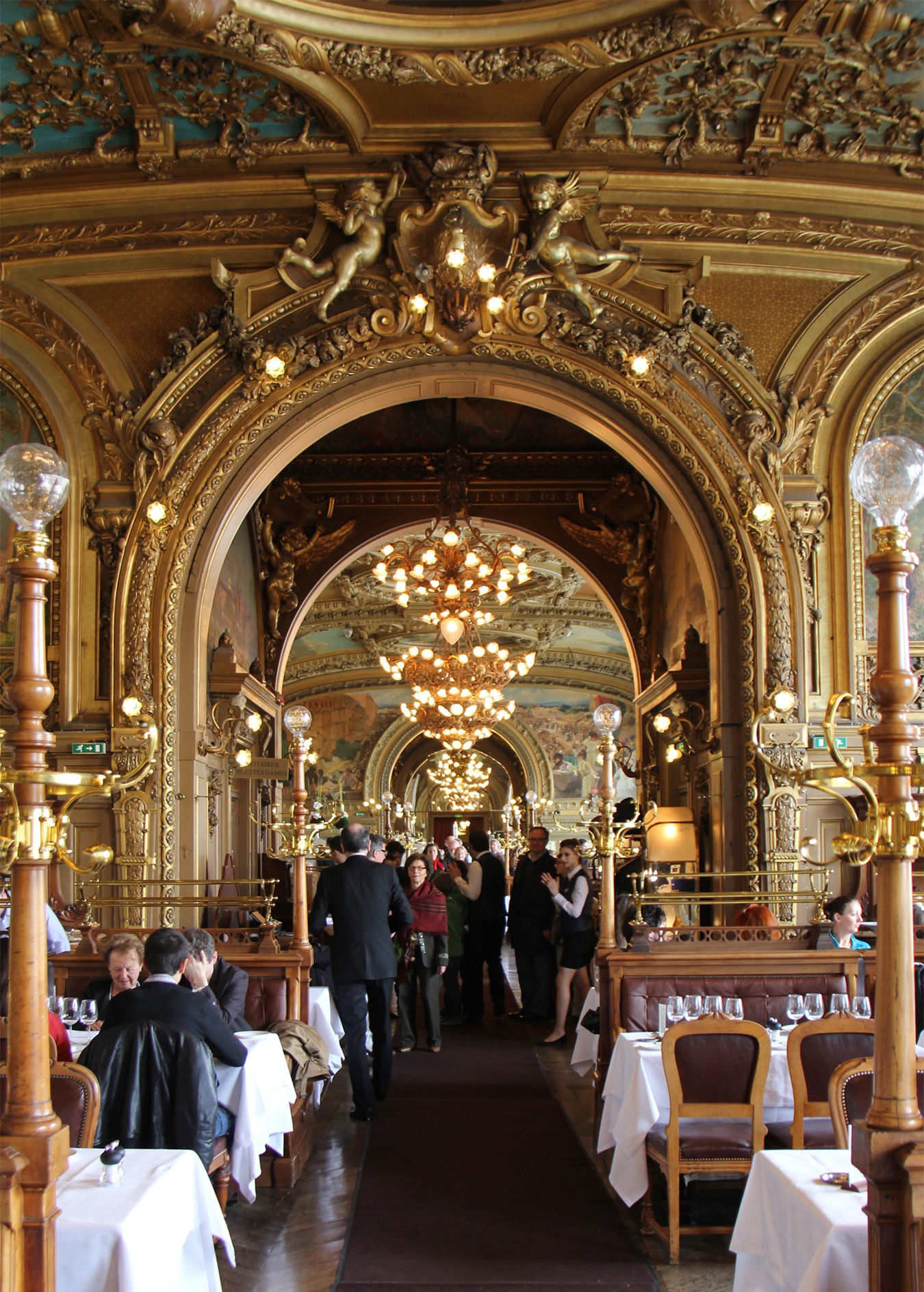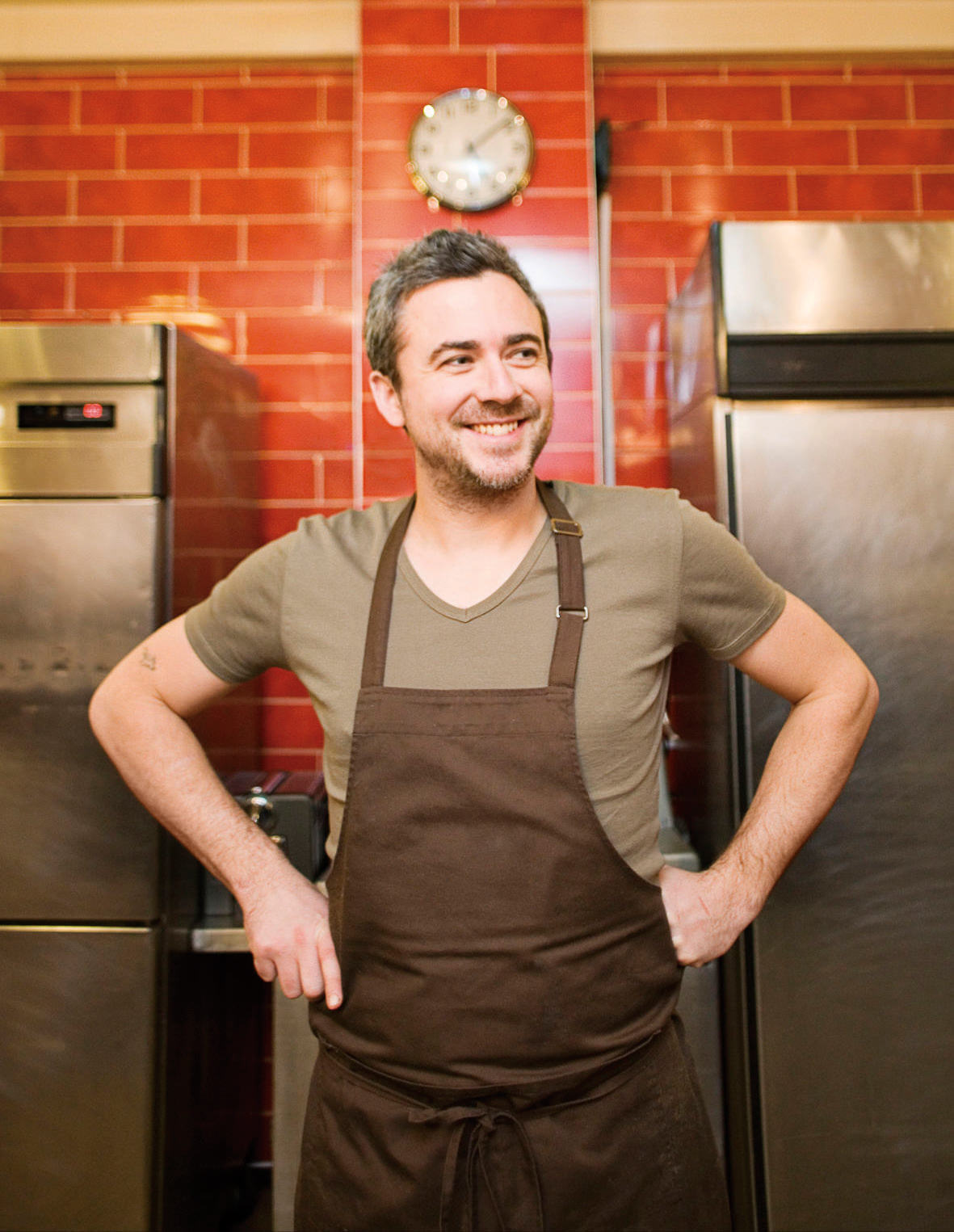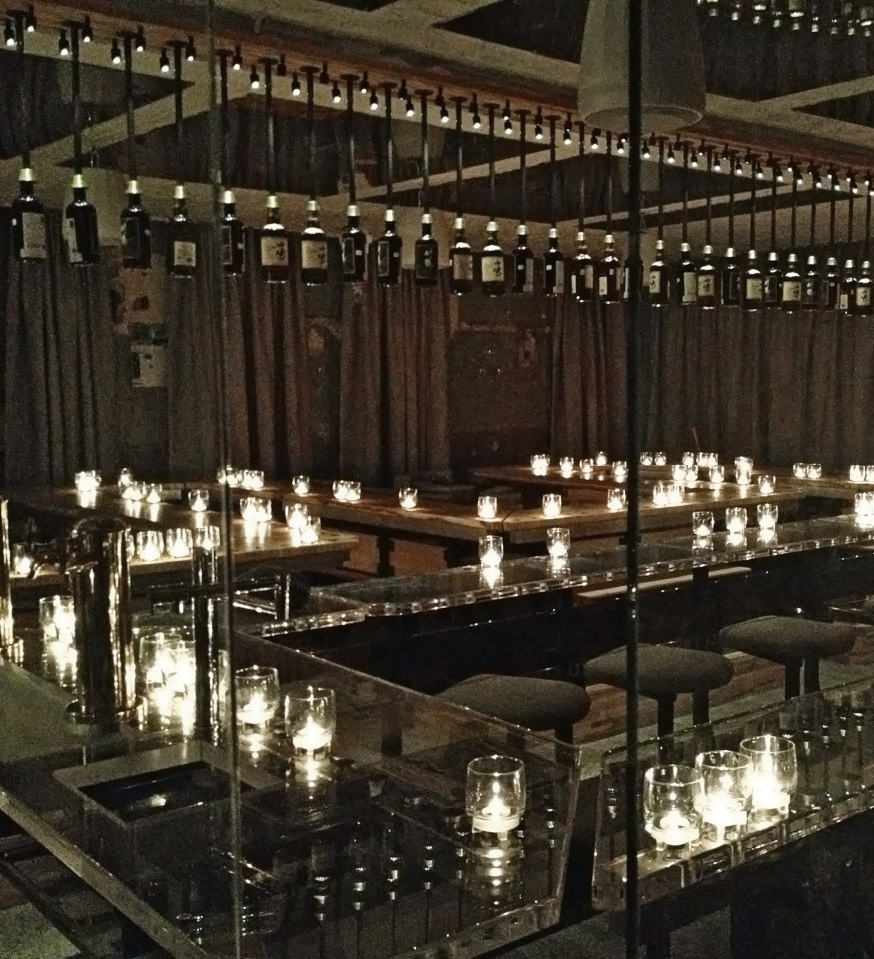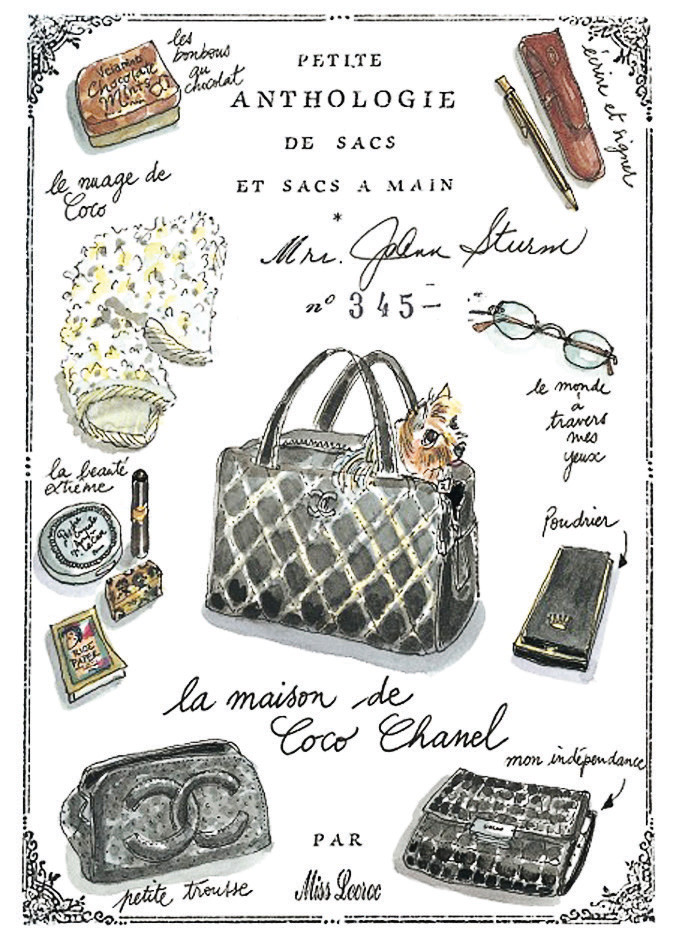Le Train Bleu
A hidden gem at Gare de Lyon.
Several magnificent structures were built to showcase Paris for the Exposition Universelle (World Fair) of 1900: the Grand Palais, the pont Alexandre III, and the Gare de Lyon—structures that continue to awe with their exuberance. The entrance to Le Train Bleu restaurant is inside the Gare de Lyon train station at the top of the stairs leading up and away from the cacophony of trains, announcements for passengers, and flapping pigeons. Once inside Le Train Bleu’s revolving door, the chaos of one of France’s busiest train stations disappears.
To enter this restaurant is to step back in time and in all probability you’ve never—ever—seen a railway station restaurant as extravagant as this belle époque showpiece. Entering here you feel a natural inclination to speak in hushed tones, as if you are entering a sacred space. And yet, the restaurant is filled with lively conversation, enjoyed at the lower decibel level the French are famous for.
Every last bit of ceiling is covered: groups of statuesque goddesses and nymphs, dreamy frescoes of the Côte d’Azur, and plenty of gold cherubs. Imagine enjoying a meal in a space as elaborately decorated as the palace of Versailles, with its abundance of gilt decor. There is no molecular gastronomy here; the food is traditional French with such fare as foie gras in a celeriac cappuccino, steak tartare and frites, and Baba au rhum—an item that has been on the menu since opening day on April 7, 1901.
Le Train Bleu was named after the blue trains whose handsome royal blue sleeping cars took Europe’s wealthy from the Gare de Lyon to the Riviera. In later years, Coco Chanel, Brigitte Bardot, and Salvador Dalí were all regulars. These days Le Train Bleu continues to enamour diners.








